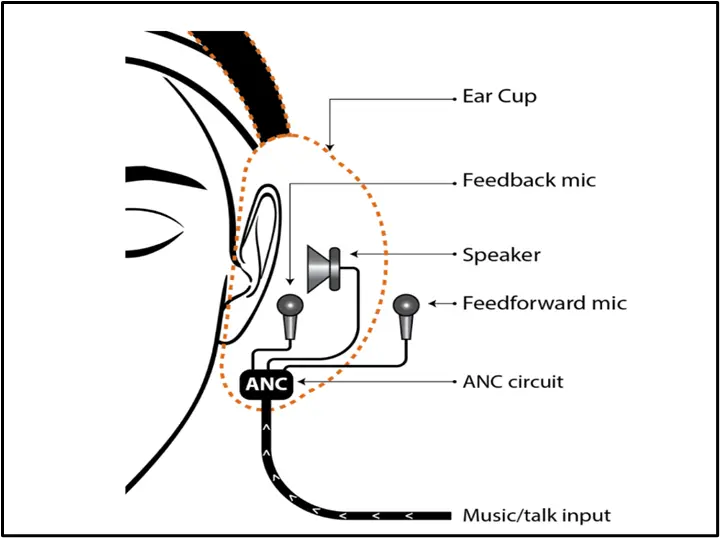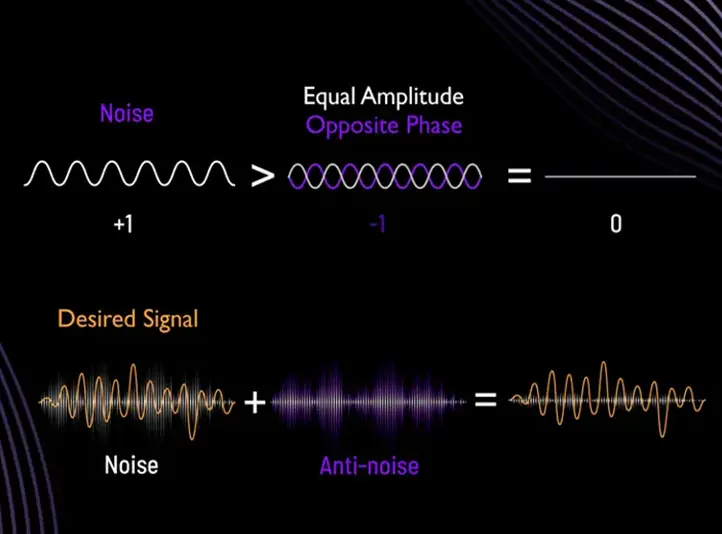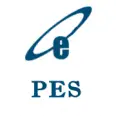An Overview
In today’s world, it can feel quite precious to find quiet moments. Anytime that one is commuting, working in a busy office, or just trying to concentrate on a flight, noise is the biggest distraction. Luckily, technology has given us a new set of tools to minimize this unwanted distraction, and they are called noise-canceling headphones. In this blog post, we will explore the mechanism of noise-canceling technology and look at a few pointers to help one choose the right noise cancelling product as per individual listening needs.
What are the Types of Noise Reduction?
There are two main types of noise reduction, each with its own strengths and uses, depending on what one needs to block out.
- What is Passive Noise Reduction (PNR)?
- PNR works by using the physical design of the headset to block out sound. It simply works by creating physical barriers like foam or padding to create a seal around the ears, physically obstructing sound waves from reaching the ear canal.
- PNR is used to block out medium range to high range frequency noises, traffic, or typing sounds.
- PNR headsets do not require any power to operate, making them a reliable option when battery life is a concern.
- PNR headphones are typically cheaper because they have a simpler design and have no electronic parts.
- They are also often lighter, which makes them more comfortable for long use.
- What is Active Noise Reduction (ANR)?
- ANR uses microphones, sound processors, and speakers to cut down on noise.
- This is the most advanced type and is mostly used in earbuds and headphones because it has become exceedingly small and energy efficient.
What are the Parameters to Choose Between ANR and PNR?
The best choice between ANR and PNR depends on individual needs and the environment that the headset will be used in.
- If one frequently travels on planes, trains, or buses, or works in noisy environments with constant low-frequency sounds, ANR headphones are more effective.
- If one primarily needs to reduce high-frequency sounds, like conversations or office noise, or if battery life and cost are major concerns, PNR headphones may be a better fit.
Let us further explore Active Noise Reduction and the science of silence. Active Noise Reduction, also known as Active Noise Cancellation (ANC) technology, changes the way we listen by eliminating unwanted ambient sounds.
How does the Mechanism of ANR Work?
Active Noise Reduction (ANR) is a system that generates sound waves that are the opposite of unwanted environmental noise. These sound waves effectively cancel the external noise, which results in a richer audio experience.
- Feedforward Microphone: It is located outside the ear cup/earbud, captures the ambient noise from the environment and converts the sound into electrical signals that the digital processor receives.
- Feedback Microphone: It is located inside the ear cup/earbud and works as a secondary device that captures the residual noise that has passed through and modifies the noise cancellation signal.
- ANR Chipset: External microphones pick up sound signals that are immediately sent to an ANR chipset that works as “brain” of the noise cancellation operation. These chips are usually specific processors, such as the Qualcomm QCC51xx-series (a typical example), which are full of advanced algorithms.
- Noise Analysis: The ANR chip looks at the incoming noise waves in terms of its frequency, amplitude, and phase.
- Anti-noise Creation: This is where the process really works. The ANR chipset generates an “anti-noise” wave. This anti-noise wave is not just any sound; it is a precise sonic “mirror” of the noise coming in, with one key difference: the anti-noise is out of phase by 180 degrees.
- Mixing and Cancellation: The anti-noise wave is mixed in with whatever audio one wants to hear – whether it is Gujarati folk music, an interesting podcast, or a particularly important work call.
- Destructive Interference: The original noise wave produced from the environment meets and is canceled out by the anti-noise wave produced by the chipset’s noise-cancelling process.


Signal Processing Algorithms
Adaptive algorithms play a crucial role in ANR systems, allowing them to adjust to changing noise environments. Common algorithms include:
- The Least Mean Square (LMS) Algorithm: A basic adaptive filtering technique designed to minimize the difference between the target signal and the output signal that has been affected by noise.
- Normalized Least Mean Square (NLMS) Algorithm: A variation of the LMS algorithm that improves stability and the speed at which the system converges, especially when the input signal strength varies.
- Filtered-X LMS (FxLMS) Algorithm: A more advanced algorithm used in feedforward ANR systems to account for the acoustic path from the speaker to the error microphone.
What are the Advantages of ANR?
ANR headphones are a great investment that can provide several advantages in everyday life in a metro city or further afield:
- Interruptible Audio Enjoyment: One can enjoy songs, podcasts, or audiobooks without the persistent distraction of background noise.
- Improved Focus and Productivity: One can create a personal area of silence to focus and concentrate on productive work, studying, or creative tasks, regardless of the external hustle and bustle.
- Reduced Listening Fatigue: By minimizing external noise distractions, one hears the audio louder at lower and safer volumes without straining to hear over the noise.
- Stress-Free Travel: During the daily commute, using these headphones, one would be able to turn it from a form of stress-down into a more peaceful experience.
In general, ANC is widely used in different areas like automotive, industrial, transportation and commercial applications nowadays.
A Brief History of ANC
- 1934: German inventor Paul Lueg registers first theoretical patent for noise cancellation through interference and creating zones of quiet.
- 1950s: Harry Olsen explains how ANC can be practically used for reducing noise in passenger vehicles.
- 1986: Bose introduces ANC headsets that are used to reduce airplane noise.
- 1990s: In the 1990s, ANC headsets started to be widely used in both the military and civil aviation sectors
- 2000: Bose launched the first consumer-friendly version of ANC headsets designed for regular daily use.
Conclusion
ANR technology transforms headphones into sophisticated sound systems, ensuring pure, uninterrupted sound through advanced digital processing and feedback mechanisms.













